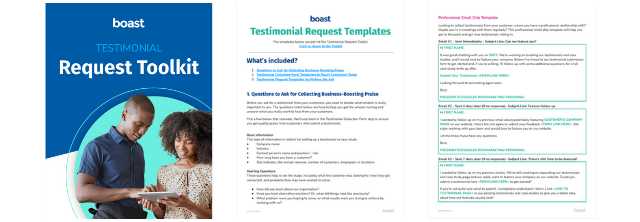Building trust with your prospects is crucial to growing your business. However, earning that trust can be challenging. You need to show proof that you can deliver on your promises. One way to show proof is through case studies. In this blog, I’ll explain what case studies are and share the eight essential components of a case study.
What is a Case Study?
From a broad perspective, a case study is an in-depth analysis of a particular subject. Generally, the study covers a problem-solution-results format. When applied to the business world, a case study examines how a customer had a problem, found a solution using a particular product or service, and shares the results of the solution.
Case studies are an excellent way for businesses to highlight the relationship between their product or service and its customers. It shares real data and results as social proof for potential customers.
Generally speaking, case studies appear as a one-page written article with visuals to support the content. However, it doesn’t have to end there. Case studies can be converted into a video, infographic, or podcast to be shared on your website, podcast platforms, and social media.
Featured Resource: Testimonial Request Email Templates
8 Essential Components of a Case Study
Case studies are a powerful way to show how your business has positively impacted your customers’ lives. To have the most success, including the following eight essential components of a case study is imperative. I’ve also included some questions to help guide your interview with your customer.
1. Start with a Compelling Title and Summary
As with any story, you should include an eye-catching headline. You want to keep the title short but relative to the story. Try to encompass the title around the work you did with your customer.
You should also include a brief summary of the entire story into 2-4 sentences. The summary is the first thing your audience will read after clicking on the title. You want to share with the reader what to expect as they continue to read. We recommend including bullet points after the summary to include key metrics to share their success.
2. Share Background Information About Your Customer
Before diving into the problem, you should share a little information about your customer. This will help your reader understand who your customer is and how long they’ve been using your product or service. In most cases, this information helps your reader find a connection.
Use the following questions to guide you as you write an “about customer” section in your case study:
- What industry are they from?
- Where are they located?
- How many employees do they have?
- How long have they been a customer?
3. Explain the Challenge Your Customer Faced
Once your readers understand who your customer is, it’s time to explain the problem or pain point your customer was experiencing. Describe the initial challenge your customer faced before using your product or service.
The problem is central to the story you’re telling. Prospects who are experiencing similar pain points will be able to relate well to the study. Consider asking the following questions:
- What were your pain points before using our product or service?
- What could have happened if you did not find a solution?
- Did you try other solutions before finding our product or service?
4. Discuss Your Customer’s Decision Process
It’s helpful to discuss your customer’s decision process and the steps they went through before discovering your product or service. Explaining this process may help potential customers work through their own situation.
In this section of your case study, you want to discuss how your customer found you. Try asking your customer these questions:
- How did you hear about our product or service?
- When evaluating your options, what was most important to you?
- Who was involved in the decision-making process?
Consider the goals and objectives your customer set in place as they began their journey to find a solution. Again, this information can help spark a connection between your reader and may drive them to give your product or service a try.
5. Explain the Solution and Implementation
After you share how your customer made the decision to choose your product or service as their solution, you want to explain how it was implemented. Focus on your customer’s experience with your onboarding process.
Sharing this process in your case study gives prospects a look into how your implementation process works. Try asking your customer the following questions:
- Did the implementation of our product/service meet your expectations?
- How long did it take to complete the onboarding process?
- Who was involved in the implementation process?
6. Share the End Results
Conclude your case study with the end results. Share the impressive metrics your customer achieved while using your product or service. Remember, the more numbers and hard data you can include, the better.
Apart from the measurable results, it’s also important to share the qualitative results. Explain the benefits your customer has received since using your product or service. Did they accomplish the goals and objectives they initially set out to achieve?
7. Include Supporting Visuals and Quotes
One component you don’t want to forget is supporting visuals and quotes. Visuals can range from images, infographics, GIFs, and videos. Images are some of the most common elements to include. Consider adding your customer’s logo, headshot, or photo from their business. Infographics can be helpful if there is a lot of data to be shared.
If you’re able to record an interview with your customer, you can turn the case study into a video testimonial as well. Video testimonials are a powerful way to share your customer’s story in a visual format. Hearing the words directly from your customer establishes an emotional connection, and emotions drive buying decisions.
Additionally, you should include direct quotes to add to your text. Select one or two quotes from your customer to enhance the content. Direct quotes provide a sense of authenticity to the story.
8. Don’t Forget the Call To Action (CTA)
Your case study is a form of Proof-Based Marketing, real proof that shows prospects how you’ve been able to help others. The last essential component to your case study should be a call to action or CTA. As with any marketing content, you want to include a CTA to bring in new leads and customers.
When done correctly, your case study can also convince others experiencing similar problems to try out your product or service. It’s best to include your CTA throughout the case study as some prospects will take less convincing than others.
Featured Resource: Testimonial Request Email Templates
Summary
There you have it, eight essential components of a case study. We recommend including all of these elements into your case studies for the most success. Remember to include your customer throughout the process and get their written consent to use their information as marketing content.
Posted in: Social Proof



